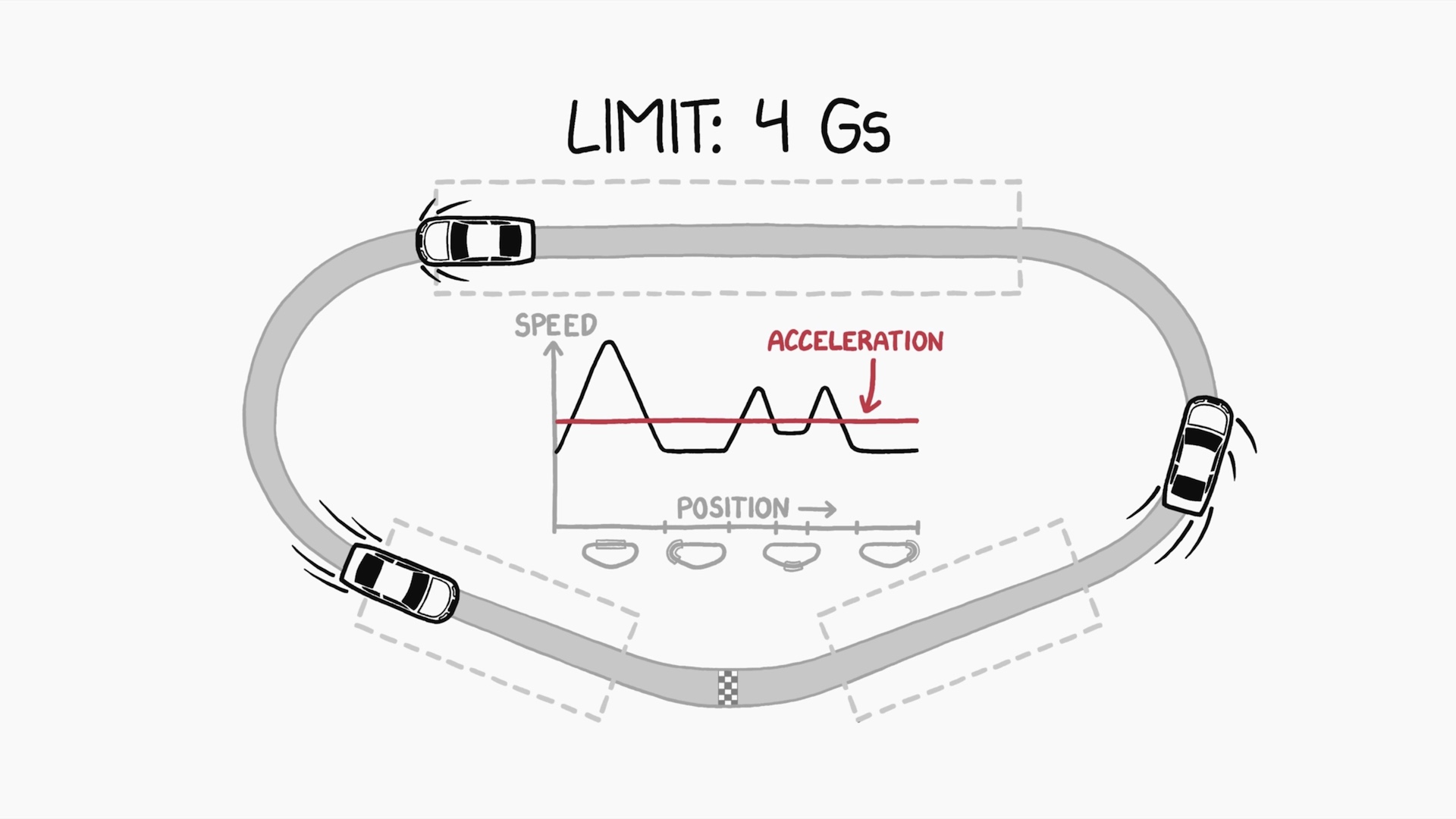

Around a road course, cars like the Dallara IR18 Indy car or a NASCAR stock car aren’t nearly as quick as a Formula 1 car. On their own turf though, they’d wipe the floor with an F1 car; it’s what they’re built to do. But how close to the pinnacle of speedway racing are we? Wouldn’t it all be better with more downforce and more horsepower? Well as it turns out, we’re already pretty close to the limit of what the human body can take, as explored in a YouTube video from XKCD.
Originally a webcomic, XKCD is the creation of Randall Munroe, a former NASA engineer who became a cartoonist. One of his offshoots, the “What If” series, recently explored the question of what would happen if speedway racing had no pesky performance-limiting rules, to see how quickly a 500-mile oval race (like the Daytona 500) could be completed. Munroe’s background is in these very physics, so he’s the perfect person to explain how fast it could be done—by a human, without one, and with a slightly looser definition of a car.

As previous attempts at envelope-pushing race cars have found, the limiting factor isn’t something like the tires, but something softer: the people inside. Humans can only take extreme G-forces for so long before we sustain serious injury. Calling on NASA data, Munroe found we could toe the line by sustaining about 4 G, which at Daytona International Speedway would average 240 mph over a lap. That’d amount to a roughly two-hour and five-minute completion time.
That’s not much quicker than Scott Dixon’s pole at the 2022 Indianapolis 500, where he averaged 234 mph over a single lap. That means IndyCar is pretty much at the limit of human anatomy as-is, at least in qualifying. The race is another story, as it tends to last around three hours. With enough power to pull the same Gs that the cars can do in corners, Munroe calculates as little as one hour and 45 minutes is possible, plus time for refueling.
Of course, Munroe also explored the implications of what could be done with no human in the equation. At that point, you also have to ask what the “car” looks like, and the fastest method ultimately turns out to be something like a tether racer. But again, if you follow this line of logic, you inevitably end up at a particle accelerator in the end. And you can’t put yourself in one of those—not without a few side effects, to say the least.

Got a tip or question for the author? You can reach them here: james@thedrive.com